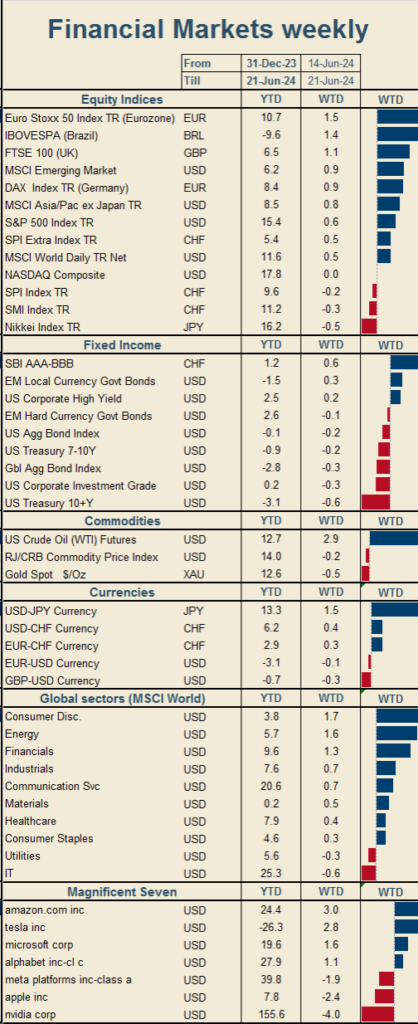Electricity was not invented, but discovered and harnessed. The understanding and use of electricity is the result of the contributions of many scientists over the centuries. One of the first significant practical applications of electricity was the electric telegraph. Samuel Morse and other inventors developed systems that enabled long-distance communication using electrical signals. The first successful demonstration of a telegraph took place in 1837, and the first commercial telegraph line was completed between Washington, D.C., and Baltimore, Maryland, in 1844. A world without electricity is unimaginable today. In the wake of the hype surrounding artificial intelligence (AI), electricity – or rather the need for large quantities of it – is currently driving a second wave of investment.
The almost overnight increase in power demand from data centers is now outstripping the available power supply in many parts of the world. This dynamic is leading to years-long waits for businesses to access the grid, as well as growing concerns about outages and price increases in the densest data center markets. In the United States, data centers are projected to consume 8% of all electricity by 2030, up from 3% in 2022, according to Goldman Sachs. This represents an unprecedented increase in electricity demand not seen in a generation. When operating continuously, these data centers have the capacity to consume a total of 508 terawatt hours (TWh) of electricity annually, which exceeds the total annual electricity production of countries such as Italy or Australia. Globally, energy consumption by data centers is expected to exceed 1,580 TWh by 2034, which is equivalent to the current electricity consumption of the entire nation of India.
Leading cloud service providers, Amazon.com Inc, Microsoft Corp and Alphabet Inc’s Google, have set ambitious goals to run their data centers entirely on green energy-Amazon by next year and Google and Microsoft by 2030. All three companies are developing technologies to reduce power consumption and balance grid loads more efficiently. These efforts include improving the efficiency of chips and servers, optimizing the layout of devices to minimize cooling needs, and shifting loads to areas where green energy is more available.However, some industry leaders, such as OpenAI CEO Sam Altman, argue that a major breakthrough in energy supply, likely through nuclear power, is necessary to achieve these goals. Both Microsoft and Amazon are investing in nuclear power, with Amazon recently acquiring a nuclear-powered data center in Pennsylvania and being open to further investment in this area. Microsoft recently admitted that its AI expansion is jeopardizing its long-standing goal of becoming carbon negative by 2030.
The increasing demand for data centers, along with significant investments by energy companies like Dominion in new substations, transmission lines and other infrastructure, will drive up energy prices for consumers, experts say. The cost of these upgrades is typically spread across all electricity customers in a region and appears as a line item on monthly electricity bills. Goldman Sachs estimates that U.S. utilities will need to invest about $50 billion in new power generation capacity to support data centers, which will increase both wholesale energy and retail prices. This will lead to delays in the adoption of AI while also increasing inflation

Chat GPT queries are 6-10 times more power intensive than traditional Google searches. Modern data centers often contain thousands of Nvidia Corp.’s coveted H100 chips, which are at the center of the generative AI revolution. Each H100 chip consumes up to 700 watts of power, nearly eight times the energy used by a typical 60-inch flat-screen TV.

According to a Dominion representative, electricity costs, including grid improvements, are allocated to the different customer classes, from residential to industrial customers, according to the actual cost of supplying each class. As a result, residential customers have seen their share of transmission costs decrease in recent years, while the share of data centers has increased.

.
Disclaimer: This document has been prepared by Lakefield Wealth Management AG with care and to the best of its knowledge and belief. However, Lakefield Wealth Management AG assumes no responsibility for the accuracy and completeness of the content and disclaims any liability for losses that may arise from the use of this information. The information presented here is for information purposes only and is intended solely for the intended recipient. Reproduction, redistribution or republication of this document for any purpose is strictly prohibited without the prior written permission of Lakefield Wealth Management AG. The content of this document should not be interpreted as a solicitation or offer to buy or sell securities, related financial instruments or to engage in any other transactions. It should be noted that the information in this document is not intended as investment, legal or tax advice. This document is not directed at US persons (as defined in Regulation S under the US Securities Act of 1933, as amended) or any person in any jurisdiction where access to or publication of this document is prohibited by reason of that person’s nationality, residence or otherwise. Access to this document is prohibited for persons subject to local restrictions. Every investment involves inherent risks, particularly with regard to fluctuations in value and returns. Investments in foreign currencies entail additional risks, as the foreign currency may depreciate against the investor’s reference currency. Historical returns should be understood as indicative and do not guarantee future performance. Furthermore, there is no guarantee that the performance of the reference index or benchmark will be matched or exceeded. Furthermore, the information provided herein does not take into account the specific or future
Source: Bloomberg, Lakefield Wealth Management AG, © 2024